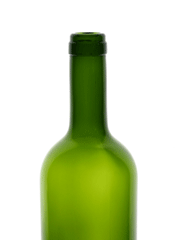We do it with beer. Why not vino?
I don’t usually have much difficulty in liquor stores; after all, the only product they sell is one of my favourite things. This time, though, I wanted to buy my red table wine in a refilled bottle — Bordeaux in a burgundy bottle, oh my! Sadly, my search left me dry.
It shouldn’t be so hard; after all, refilling bottles is a giant success story. Canadian beer bottles have a 97 per cent return rate and each is refilled 15-20 times in its lifetime. In Germany, Coca-Cola is sold in refillable plastic bottles. Prince Edward Island has required all carbonated beverages to be sold in refillable containers since 1984.
According to the most recent stats from the Brewers of Canada, a typical Canadian drinks 69 litres of domestic beer each year, of which 70 per cent is sold in refillable bottles. That works out to about 4 billion bottles each year. Refilling a bottle 10 times slashes the energy requiredper use to one-fifth of what’s needed to produce a new bottle every time (and one-tenth of an aluminum can), which converts into a savings of 3,140,000 tonnes of CO2. And remember, that’s calculated from 10 refills, and Canadians refill 15-20 times.
What’s in a label?
So why can’t I find wine in reused bottles?
Turns out you can — in Europe. French wine bottles average eight refills, but let’s temporarily forget that that magical place exists. The Husch family vineyards in California used to refill bottles, which they purchased from a bottle washer called Encore! (The exclamation point is, how you say, sic?) The problem for North American wineries, not shared by breweries or Europeans, is that they can’t get their labels to stick. Old-fashioned glue works just fine for everybody else . . . but might allow the label to come off in the ice bucket. Heaven forbid you get halfway through the bottle and plumb forget what you are drinking! So, now wineries use super-sticky labels to pander to the pompous jackasses more concerned with showing off the label than getting a buzz on. That makes removal almost impossible and reuse that much more difficult.
Tetra Pak mentality
While looking for wine in refilled bottles I had the misfortune to see one of those shrill displays of wine in Tetra Paks; this crap is being flogged as a “Green Solution.” It’s junk like this that drives me to the liquor store in the first place. Tetra Paks are here to save us because they weigh less, so less climate-changing diesel fuel is required to lug them across the ocean from Australia. Dear God, where to start?
First, even if you can get the drunkards off their lazy asses to join the mere quarter of the North American population that recycles, few places recycle Tetra Paks. Second, the places that say they recycle Tetra Paks are liars. What does “re” mean? It means again. Can a Tetra Pak be made into another Tetra Pak? No. Tetra Paks are seven incomprehensibly thin layers of paper, plastic and aluminum. The poor suckers who try to recycle them use giant blenders to mush the paper pulp off the plastic and metal, then they need to separate the plastic from the metal. What idiot thought this would be a better idea than washing a bottle and refilling it?
But the biggest problem is actually the same problem — jackasses. When did it become okay to destroy the climate and kill 50-90 per cent of living species so we could drink imported wine? How did it become possible for us to think we could have whatever we wanted wherever we wanted it? Do you really want to try to look your children in the eye and explain that they have to eat jellyfish gumbo because you couldn’t resist that lovely imported shiraz?
Here is how it works. You can still get drunk on delicious drinks. The drinks may not be wine. They may be cider, perry, fruit wines, vodka, brandy, whisky, shōchū, tequila or whatever other agent-de-blindness you can come up with from your local foodshed. You might become famous on your block for the quality of your moonshine. These marvelous liquors will be packaged in refillable containers. Or, if you absolutely must raise your little finger with a glass of imported wine, it must be shipped by a sailboat. With actual sails.
Mark my words, the first North American winery to start marketing mismatched, reused bottles is going to turn a lot of heads. Imagine a case of pinot noir in stubby Chianti flasks, narrow Alsace bottles, perhaps a flattened Bocksbeutel. What chaos! What excitement! So, wineries: start refilling bottles, and then send me a case. I think I deserve it. And even if I don’t deserve it, I need it.

